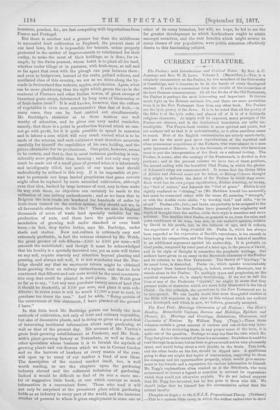that the different kinds of propositions may be better expressed
than they have hitherto boon by Hamilton, Thomson, Do Morgan, and the rest. The S.N.I.X. theory is not intended to be huntourous, though the con- junction of letters might tend to excite amusement, Just as Aristotle's propositions were represented by the vowels A, E, I, 0, so the author represents his propositions by the letters in question. Of these, S. moans substitutive, in the sense that the whole of one term may be substituted for the whole of the other. X. denotes exclusion, either term being entirely excluded from the other, in the manner of a universal negative proposition. N. denotes inclusion, tho whole of one term being congruent with only a part of the other. Lastly, I. stands for interseclion,meaning that parts only are congruent, and parts only are incongruent. Under these four kinds of relationship, the author thinks that all propositional relations may be classed; but six relationthipe of partialities are rip- parentlydevoloped out of those four. Two of those relations of partialities are, in the author's opinion, new, and have not previously boon dis- criminated by logicians. The notation of propositions, having been fixed and explained, is applied to the representation of syllogisms ; but we should get into too great technicalities were we to attempt to follow the matter out. To say the least, the essay is ingenious, and shows some facility in the invention of notation, We are not at all sure that the system proposed is not as good as those of some celebrated logicians. At the same time, it is questionable whether it is really of use, It belongs to the Hamiltonian rather than the 13oolian style of logic, and even if comparable with the notation of Hamilton, will be useless if Boole's views prove to be correct. Moreover, we quite disagree with the author's statement (p. 69) that his system "seems to provide for the expres- sion of all of which we can be conscious, and to traeo the laws of thought that certify the truth of our conclusions." The existence of disjunctive propositions appears to be overlooked altogether, so that a large part of the arguments both of common life and of science. are left out in the *cold. The author's logical residing does not strike us as extensive, and his style of writing is sometimes inaccurate. What does ho moan, for instance, by saying (p. 8) "that reciprocity of relation is the true converse of any proposition ?" Here a concrete term is affirmed of an abstract one. The a priori presumption of probabilities is altogether against any now attempt to treat logical relations, but logical readore who are dissatified with all previous existing systems should not neglect an essay like the present, which is both ingenious and acute.































 Previous page
Previous page